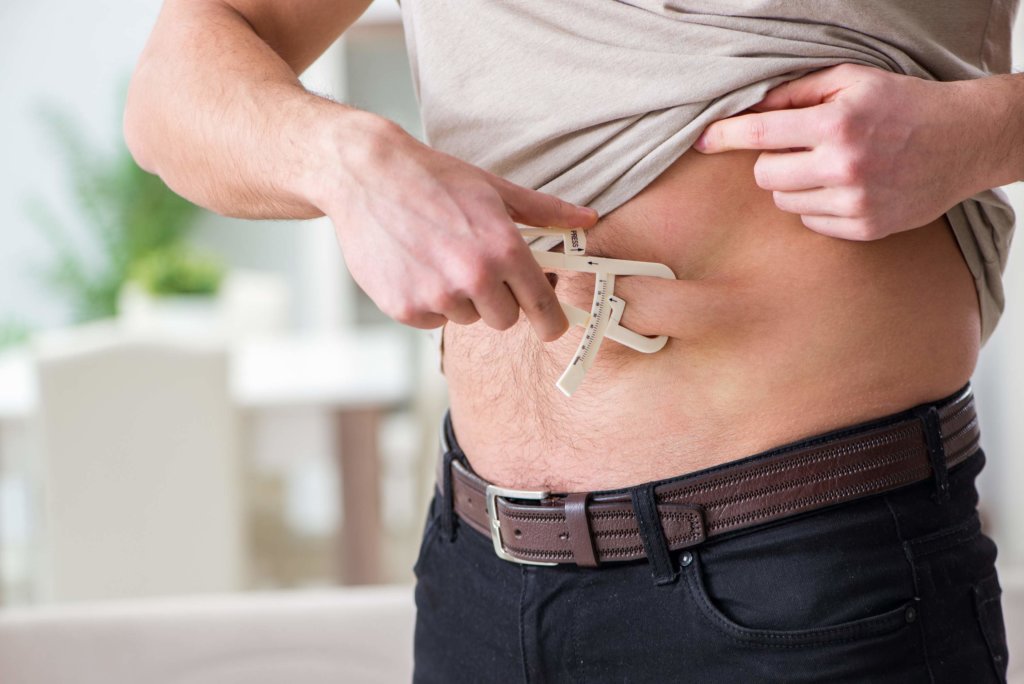Belly fat and the best ways to fight it

For most people, a glance in the mirror is enough to see that they carry too many pounds around their midsection. But even slim people can accumulate internal belly fat. Visceral fat harms health. But with the right strategy, anyone can reduce and get rid of their belly fat.
If fat, then in the right places
The study caused a worldwide sensation: overweight people do not necessarily have a higher health risk than slim people. In fact, the opposite is said to be the case. People with a few pounds too many on their ribs not only have a lower risk of dying, but they are also more resistant to disease. So is this a free pass to put your feet up and eat fast food? Of course not. You can be a little fatter, but it is only healthy and life-prolonging if the fat is in the right places.
Experts distinguish between two figure types
- The pear shape is the lucky one. Here the fat is located on the hips and thighs. These excess fats are not metabolically active. Therefore, the risk of developing diabetes or heart disease is not increased. Disadvantage: the pads are challenging to get rid of.
- The apple shape is much more dangerous. Here, visceral fat accumulates in the abdominal cavity and surrounds the intestines, pancreas, and liver. It is metabolically active and releases hormones and messenger substances that can cause inflammation. The only advantage is that it can be easily trained away.

At what point am I too fat?
The measure of all things to calculate this has always been the body mass index or BMI for short. It is calculated by dividing body weight by height squared. Here is an example for a body height of 1.75 meters and a weight of 70 kilos:
BMI = 70 / (1, 75 * 1, 75) = 22, 86
A BMI between 20 and 25 is considered ideal and a BMI between 25 and 30 is also still okay if the fat is well distributed. Many top athletes have a BMI but are still not overweight. Their fat percentage is in the micro range. This is why BMI is criticized because it does not consider the physical constitution and fat distribution in the body. Meaningful values only come from other data.
You should pay attention to these values
- Abdominal circumference: It should be less than 88 centimeters for women and 102 centimeters for men. The tape measure should be placed just below the navel and then measured after exhaling.
- Waist-to-hip ratio: This calculation involves dividing the waist circumference by the hip circumference. To do this, stand upright. The waist circumference is measured between the upper edge of the pelvis and the lowest rib, the hip circumference at the height of the greatest width. You can enter your data here and have it calculated.
- Neck circumference: Another value that is becoming increasingly important. It should not be more than 43 centimeters for men and 41 centimeters for women.
What makes belly fat so dangerous
Scientists have now unraveled why abdominal fat is so dangerous: the more abdominal fat, the greater the risk that the tissue will become inflamed. The inflammatory factors are released into the liver via the portal vein and flood the body. The dramatic consequences: Blood vessels become inflamed and increase the risk of heart attack and stroke. In addition, non-alcohol-related fatty liver can develop. The overtaxed organ produces sugar uncontrollably, which leads to insulin resistance and eventually to diabetes.
Belly fat reacts very quickly to training
As already mentioned, belly fat can be reduced well with the right fitness program. This is because the body prefers to get the energy for sport from metabolically active tissue. Martial efforts are not necessary. However, regular exercise is essential. A combination of endurance and strength training is ideal. Muscles, in particular, are highly effective fat killers. Abdominal exercises, however, are the wrong way to go. It is impossible to lose fat in specific areas. It is much better to do a whole-body workout that uses many muscle groups. This can include planks, squats, push-ups, and pull-ups. For motivation: just one extra kilogram of muscle burns 100 calories a day, even at rest.

This is what your strength training should look like
- After a check-up with the doctor, beginners start with strength endurance training of the large muscle groups. That means legs, arms, back, shoulders, abdomen, and buttocks. These can be exercises with your own body weight, weight machines, dumbbells, fitness bands, medicine balls, or other equipment. Do 3 series of 12 to 15 repetitions per exercise. If you train on equipment, you should work with 60 to 70 percent of your repetition maximum.
- Advanced exercisers should do a muscle-building workout. Ideally, 3 series of 8 to 12 repetitions with 70 to 80 percent of their repetition maximum. Here, too, all large muscle groups should be used.
- HIIT training is also suitable for advanced. Different exercises are performed quickly, one after the other with short breaks in between. It burns a lot of calories but can also be very strenuous. A HIIT workout lasts 15 to 30 minutes and burns a lot of calories in that time.
This is what your endurance training should look like
- After a check-up with the doctor, beginners choose the sport they would most like to do. This means jogging, swimming, cycling, inline skating or, in winter, cross-country skiing. In the first few weeks, alternate brisk phases with slow phases.
- If you can exercise for 40 minutes or longer without any problems, you should include interval training sessions from time to time. This involves alternating fast phases with slow phases. This type of fitness burns a lot of calories. Running up and down stairs or hills are also great fat burners.
Why you should train regularly
- If you train for 60 to 70 minutes three times a week – endurance training can be combined well with strength training – you should see the first successes after a short time. However, only – yes, of course, the restriction had to come now – only if you also change your diet.
It won’t work without sensible nutrition
- The ideal is 400 grams of vegetables and 200 grams of fruit daily.
- It is good to drink a glass of lukewarm water before each meal. This boosts the metabolism.
- You should use high-quality vegetable oils such as rapeseed oil, olive oil and soybean oil.
- Eat real wholemeal bread. It contains a lot of fibre, which fills you up quickly and for longer.
- Avoid animal fats as much as possible. You should not eat meat every day. If at all, twice a week is sufficient.
- You should also avoid sugar as much as possible. There are many healthier alternatives.
- Eating three times a day is better than five times a day. This way, the pancreas can rest again and again.